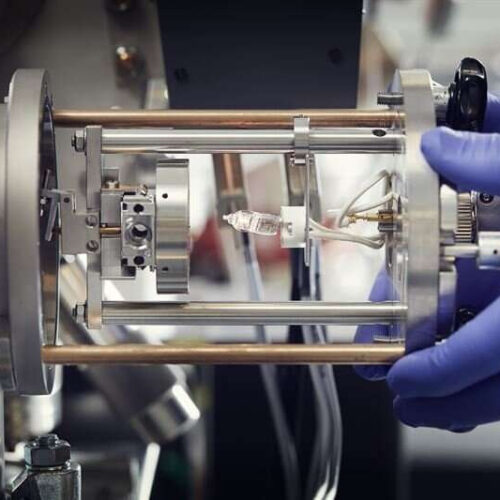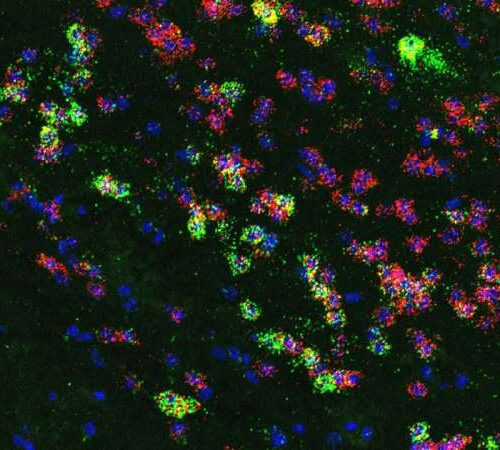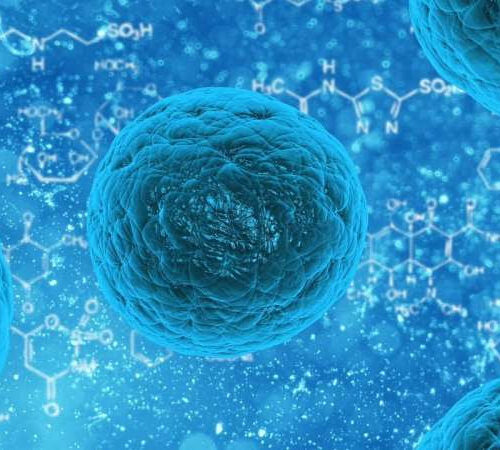MAY 2ND, 2023 CONN HASTINGS MEDICINE Researchers at the Harvard Wyss Institute have developed a new type of cell therapy for multiple sclerosis patients. The technique involves taking a blood sample from the patient being treated, isolating a sample of myeloid white blood cells, and then modifying them with ‘backpacks’ that contain anti-inflammatory molecules. The modified cells...
Tag: <span>cells</span>
New method reveals nano-scale drug molecules in cells
by Chalmers University of Technology Credit: Chalmers University of Technology Researchers at Chalmers University of Technology and partners within the Chemical Imaging Infrastructure have produced a method whereby it is possible to see at the nano level where a medicinal drug ends up in the cells and how much of it is needed for optimum treatment. The...
How big, bulky drugs get into our cells
ARC INSTITUTE Recent findings by UCSF and Arc Institute scientists open up new possibilities for overcoming a fundamental challenge in drug discovery. There can be a tradeoff between optimizing a drug’s key-in-a-lock fit with its target and the drug’s ability to make its way across the cellular membrane and get to that target in the...
Research identifies new way to halt pancreatic cancer invasion by targeting healthy cells
by Queen Mary, University of London Inhibition of FGFR1 limits invasion in pre-clinical models of PDAC. A Representative H&E images of MIA PaCa-2: PS1 organotypics treated with 100 nM Gemcitabine, 1 μM ATRA, or 1 μM AZD4547 either alone or in combination for 7 days. B Quantification of invasion from A. Images representative of at least 3 biological repeats. Individual colors on graphs indicative...
Got junk food on the brain? These cells may be to blame
by Cold Spring Harbor Laboratory CSHL Professor Bo Li has discovered a group of neurons, shown here in green, in the brain’s amygdala that drive mice to eat even when they’re not hungry. The neurons activate in response to fatty and sugary foods and trigger a behavior called hedonic eating—when mice eat for pleasure instead...
How immune cells overcome exhaustion
by Technical University Munich MYB regulates the expression of genes that are critical for the function and maintenance of exhausted T cells. a–c, Congenically marked Mybfl/flCd4Cre (Myb-cKO) and Cd4Cre (control) P14 T cells were adoptively transferred into naive recipient mice, which were then infected with LCMV-Docile. Splenic P14 subsets were sorted at 7 dpi and processed for bulk RNA-seq....
Cellular waste may supercharge immune cell function
by Van Andel Research Institute Credit: CC0 Public Domain The immune cells that protect us from infection and cancer seek out a wide array of fuel sources to power their function—including some long thought to be cellular waste products. The findings, published today in Cell Metabolism, lay the foundation for future personalized dietary recommendations designed to supercharge...
Cells that control hunger affect brain structure and function
by Mallory Locklear, Yale University Neurons in the hypothalamus (B) project to the ventral tegmental area (C), where cells send connections to the prefrontal cortex (A). Through this pathway, AgRP cells in the hypothalamus affect cortical structure and function. Credit: Yale University The prefrontal cortex region of the human brain is responsible for a range of...
New structure found in cells
Every cell contains millions of protein molecules. Some of them have the ability to phase-separate to form non-membrane-bound compartments, called biomolecular condensates, inside a cell. It has long been assumed that there was no further structure underlying these condensates, only solution-soluble proteins. A research group led by Rohit Pappu, the Gene K. Beare Distinguished Professor of biomedical...
The human body has 37 trillion cells. If we can work out what they all do, the results could revolutionize health care
by Daniel M. Davis, The Conversation Priscilla Chan and Mark Zuckerberg with Moshe Biton (right) and Aviv Regev (left). The Chan Zuckerberg Initiative is one of the major funders of the Human Cell Atlas. Credit: Chan Zuckerberg Initiative, CC BY-ND The average body contains about 37 trillion cells—and we are in the midst of a revolutionary quest...








